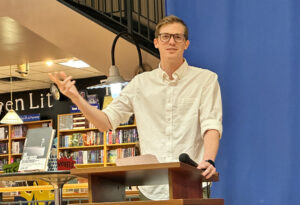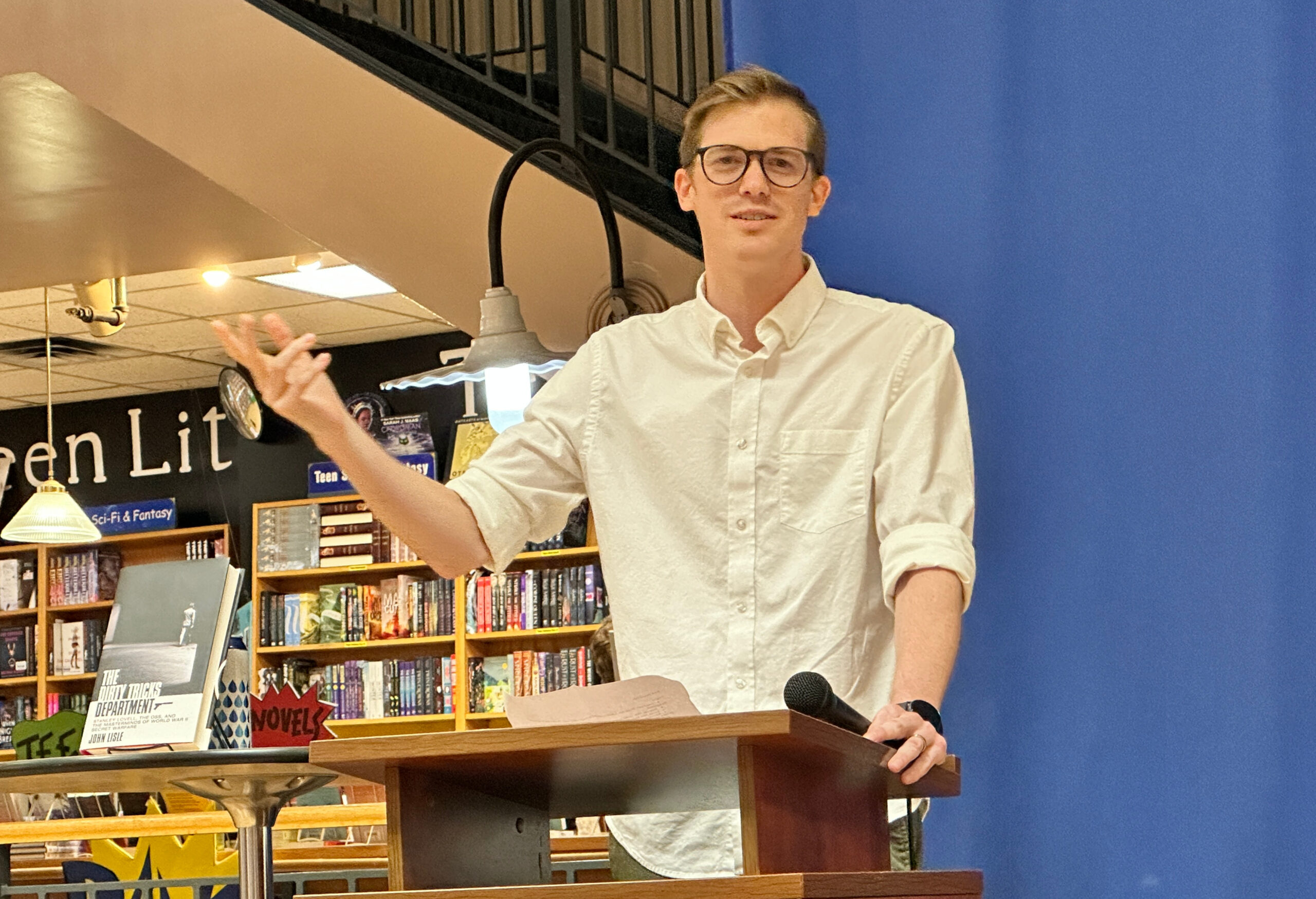Before the CIA, there was the OSS: Office of Strategic Services. This fascinating book by Dr. John Lisle tells its story.
The book has rightly earned wide praise. Pulitzer prize winner Tim Weiner is quoted on the backcover as stating it “is the best book about the OSS I’ve ever read. It’s also one of the finest intelligence histories in recent years.”
Dr. Lisle, a graduate of the University of Texas here in Austin, recently spoke about his research at Book People.
He “kept coming across schemes that had to do with Stanley Lovell, a chemist from the Boston area. It seemed like every interesting scheme during World War II connected with him somehow. I realized he is the common thread and since nobody has written a book about this it’s too interesting not to tell! That’s how this book came about.”
While the OSS had many facets, Lisle is concentrating in this work on the R&D branch. The OSS was charged with gathering intelligence from abroad, analysing that intelligence, spreading propaganda abroad and one thing it was also in charge of was supplying undercover agents with the weapons, documents and disguises they would need on their mission.
The head of the R&D branch was Lovell. “He was recruited to head this branch by William Donovan, a World War I war hero. He was appointed by Franklin Roosevelt to head the OSS.”
Lisle explained that the “OSS was composed of three main divisions. Division 19 created the deadly weapons; the Documents division was in charge of forging all the documents the agents might need; and the Camouflage division in charge of creating disguises.”
Naturally the deadly weapons brings to mind James Bond and his gadgets. That was the British version, but the Americans came up with some pretty cool stuff too. One of these was the ‘time pencil.’ “It was a fairly simple device,” Lisle explained. “You can set this time pencil; it will run out at a pre-determined time, and after that it explodes. The idea is that a saboteur can attach it to something, make a getaway, establish an alibi, and then this thing explodes and nobody knows who did it. It comes in handy when you attach it to another weapon, like a limpet, which is a kind of mine that might be attached to a ship.”
But the most famous weapon they devised was the bat bomb! “The idea is we can create incendiary devices, attach them to bats, and release them in Japan. They would then fly into buildings and warehouses where they are going to explode and incinerate a city without dropping any bombs.” Needless to say this fantastical scheme was never implemented.
Speaking of fantastic, there was actually an Operation Fantasia against Japan based on the Shinto religion. “Ed Salinger has an idea on how to capitalize on the fact that there are bad omens in the Shinto religion. He suggests the OSS capture foxes, paint them with glowing radioactive paint, and release them in Japan. The idea being that Japanese soldiers and civilians are going to see these foxes which they will think represents portents of doom and thus lose faith in the war effort.”
Surprisingly, this hair-brained operation got along quite far. Salinger did a number of experiments to make it happen. The American Radium Corp. had paint filled with radium that they used to apply to foxes. “But will paint stay on the fur of an animal? To find out, they went to the Bronx Zoo and painted a raccoon. After a couple of days of raccoon shenanigans, the paint stayed on! The next experiment was to determine whether people would really get scared by the foxes. They went to Rock Creek Park in Maryland where they released 30 of these glowing foxes in the park.”
Lisle read an account of what happened on a summer night in 1945. “Horrified citizens, shocked by the sudden sight of the ghost-like animal, fled from the dark recesses of the park with the screaming jeemies.” Finally, they had to figure out how to get the foxes into Japan. An OSS team released some foxes in Chesapeake Bay and, while the foxes did make it to shore, the paint had washed off! The war ended before this nonsense went any further.
The book has a dark side too, with detailed descriptions of the horrible tortures endured by captured agents. There are chapters on chemical agents, truth drugs, and the pursuit of the physicist Werner Heisenberg who, it was suspected, was involved into creating an atomic bomb.
All of this and more is related in an engaging prose style, supplemented by 8 pages of glossy photos showing the principal players, and images of forged documents and agents in disguise.
I highly recommend this book. A perfect gift for anyone who likes spooks!
The Dirty Tricks Department: Stanley Lovell, the OSS, and the Masterminds of World War II Secret Warfare lists for $29.99. It is by St. Martin’s Press.
Photo by C. Cunningham

